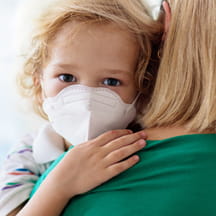The rapid escalation of the novel coronavirus (COVID-19) pandemic and surge of cases in the U.S. has stretched health care resources thin—often requiring providers to work outside their primary areas of expertise. Children's Hospital at Montefiore (CHAM) in Bronx, New York, enlisted more than two dozen pediatricians, nurse practitioners and psychologists to assist its pediatric palliative care program. CHAM sought to rapidly expand its Quality in Life Team (QUILT) to respond to an influx of adult COVID-19 patients.
Fortunately, the program's director—and previously its sole team member—was able to call on her training in medical education to quickly get her new team up to speed.
"My background gave me the skill set to effectively plan a division, a public health service program and teach others in a rapid fashion," says Sarah Norris, M.D., M.Ed., director of pediatric palliative care and the QUILT at CHAM.
Skills, training inform palliative care assignments
By mid-April, CHAM had admitted more than 100 adults with COVID-19—many requiring intensive palliative care. To meet this increased demand, Norris split her new team into groups assigned with various patient touch points—including daily calls to support patient and family informational and emotional needs and bereavement calls to console and support family members for up to two weeks after a loved one had passed.
Norris selected and deployed providers for each family based on their skill sets and who she felt could best treat the four types of pain central to palliative care: physical, emotional, social and spiritual. In addition to implementing "just-in-time" training for the new QUILT members, she created scripting for any situations they might face—including how to help COVID-19 patients speak with loved ones before they are placed on a ventilator.
"We help them have a meaningful conversation about forgiveness, love, thanks and goodbye for now," Norris says. "That has been so beautiful to allow people to connect in a focused and meaningful way."
Additional palliative work also benefits providers
The newly expanded team has already had a profound impact on adult COVID-19 patients and their families. Within three days of its early-April launch, QUILT made more than 100 supportive phone calls, and bereavement counselors had consoled 15 families. Those connections serve a clinical purpose as well—the team records their call notes in the patient's electronic medical record, so their providers are in the loop on those conversations.
Norris says the work has also enriched the experience of the QUILT members—especially those who otherwise couldn't care for patients due to their own health concerns.
"They tell me they were worried they wouldn't be able to contribute or make an impact during the pandemic," Norris says. "But by joining the extended QUILT, they're able to share their talents and gifts because they provide comfort at a time of absolute uncertainty."
Expanding the "quilt"
While CHAM continues to take on adult COVID-19 cases amid the ongoing pandemic, it's uncertain how much longer the patchwork team will be needed. But Norris is proud of the work her team is doing and how seamlessly they've adapted to their new roles—not unlike the more common understanding of her team's acronym.
"A quilt is a blanket that's made square by square, and you can enlarge it as much as you need to by just adding another square," Norris says. "Every time we add another patient to our children's hospital, we add another square to our quilt. It's a privilege to be at the children's hospital right now."


